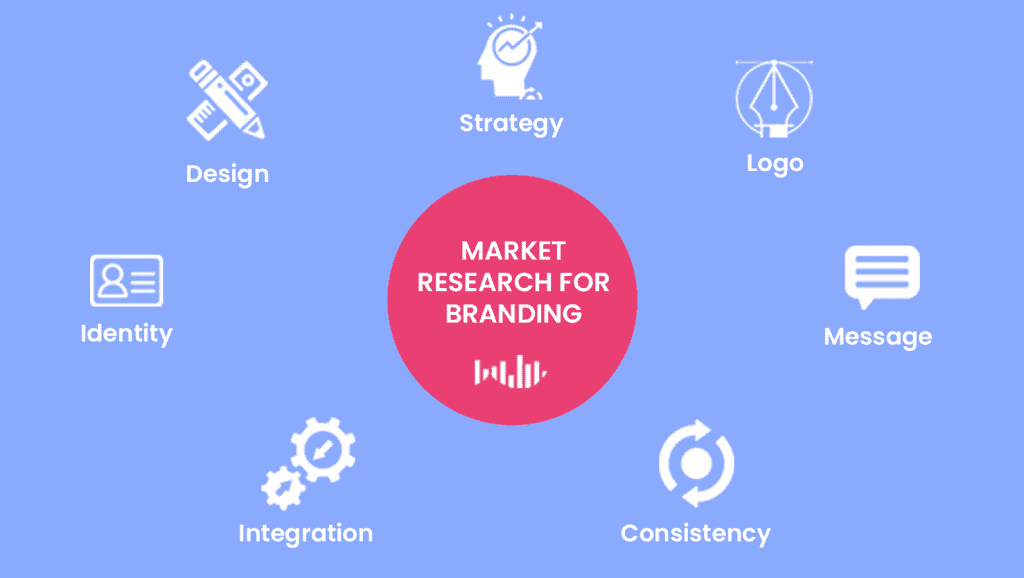How to Conduct Market Research: Complete Guide
Have you ever produced a great idea for a company and worked on it forever (or at least what seemed like forever) before realising it crashed harder than a goldfish who can’t swim? No one sets out to invent something no one wants, yet it happens all too frequently.
So, what is the difference between successful businesses and ones doomed to fail? You got it — market research.
Market research means gathering data about possible consumers to determine if individuals will buy your product/service before investing too much time or money into creating it.
This involves looking into consumer behaviours, preferences, motivations and unmet needs within particular markets; there’s no need for guesswork when armed with facts based on information.
Table of Contents
Why Is Market Research So Important?

Before diving into a murky lake, wouldn’t you want to know what’s beneath the surface? Of course! You should check it out first.
Launching a new product or service without proper market research is the business equivalent of that dangerous dive. You don’t know where you're going or what's down there — blind to potential hazards.
Research provides a life vest so you can test the waters first. It helps reveal:
- If people want what you’re offering
- Who your target customers are
- What they’re willing to pay
- How can you modify your product so that it better meets their needs
- How do I reach and market to these people most effectively
- How big of an opportunity is there in this market, anyway
- What are competitors doing, and how can we differentiate ourselves
Without this critical information, you’re flying blind, increasing your chances of crashing and burning. A surprising 42% of failed businesses say “no market need” was their biggest problem.
Don't let yourself become another statistic! Do some market research before strapping on those water wings.
Two Main Types of Market Research
There are two types of market research methods: primary and secondary. Let’s take a look at them.
Primary Research
This is when you gather data from the horse’s mouth – your potential customers. Here are some common examples:
- Surveys and questionnaires
- Focus groups
- Interviews (in-person, phone, etc.)
- Observation (watching people use your product)
- Field trials (testing prototypes or concepts)
The main advantage of primary data is that it’s specific, recent, and directly about your needs. The catch? It takes longer to collect because you have to do everything yourself.
Secondary Research
On the other hand, secondary research involves analysing data that already exists somewhere else. Some sources include:
- Market reports and industry data from research firms
- Competitor analysis and benchmarking
- Public data (census, labour stats, etc.)
- Academic studies and papers
- Social media listening
Secondary data is faster and cheaper but may not be as up-to-date or relevant to your situation.
Most companies do a bit of both primary and secondary research. How much they lean towards one or the other depends on their goals, timelines and budget.
How Do I Conduct Market Research?

Excellent question! Doing market research isn't hard, but it takes some work. Here are the key steps to follow:
1. Define Your Goals & Questions
First, figure out precisely what you're trying to learn. What are your burning questions? For example:
- Is there a demand for my product idea?
- Who is my target customer?
- What features do they want to see?
- How much are they willing to pay?
- Where do they search for this type of product?
Get crystal clear on your objectives. This will determine the best research methods and how to frame your questions.
2. Describe Your Buyer Persona
A buyer persona is a semi-fictional representation of your ideal customer based on accurate data and educated speculation. It includes details like:
- Demographics (age, gender, income, education etc.)
- Job role and industry
- Goals, challenges and pain points
- Interests, hobbies and values
- Psychographics (personality, attitudes, etc.)
Having a vivid buyer persona in mind makes the rest of your research exponentially more focused and valuable. Start by making educated guesses, then refine them as you gather more data.
3. Check Out the Competition
As part of your secondary research, do a thorough competitive analysis. Carefully examine your key competitors:
- Their product/service offerings
- Their pricing and positioning
- Their marketing messaging and channels
- Their strengths, weaknesses and differentiators
Look for gaps, unmet needs, and opportunities to separate yourself from the pack. What are they missing that you could provide? How can you overcome their shortcomings?
4. Deploy Primary Research Tactics
It's time for the hands-on primary research! But don't just slap together a random survey and blast it out. That's a rookie mistake.
Instead, carefully plan out your research activities. What methods will best answer your specific questions? Surveys, interviews, focus groups?
If using surveys, spend time crafting an intuitive flow with straightforward, unbiased questions that will produce meaningful insights.
5. Analyse the Data & Look for Patterns
Once you've collected all your primary and secondary data, it's time to dig in and look for trends, behaviours, and common threads.
What quantitative stats stand out? Are there any surprising qualitative findings? How can you connect the dots to compelling stories and buyer insights?
For example, you may discover:
- 68% want a particular product feature
- Price is the most significant deciding factor for millennials
- Your target persona struggles with XYZ pain points
- They tend to browse for solutions on TikTok and Instagram
These types of specific revelations are Marketing gold! Use them to guide future decisions.
6. Validate Your Idea (Or Pivot)
Based on your comprehensive research findings, you should now have a much better feel for:
- If there is a natural, sizable market opportunity
- Exactly who your most promising target buyers are
- What do they need, and what motivates their purchases
- How to design and position your offering
- How to effectively market and sell to them
If the data confirms you're on the right track, full speed ahead! Refine your strategy and get busy making those sales.
However, if your research exposes some harsh realities and red flags about your idea's viability, please don't stick your head in the sand! Pivoting or revamping your idea is infinitely better than wasting time and money pursuing a likely dead end.
How Often Should Market Research Be Conducted?

You would perform extensive market research before creating any product or service in a perfect world. This way, you are not shooting in the dark.
However, it is wrong to treat market research as an activity tone once and for all. Markets constantly change with new fashions, rival products, economic pressures and shifting customer tastes.
Therefore, wise businesses incorporate market research as part of their routine. Perform primary research at least once every year. Complement this with ongoing monitoring of secondary data sources.
The speed and intensity may differ depending on your line of trade, available capacity or pending projects. But keep it alive! Stale market assumptions can sting sooner than you think.
What Are the Biggest Challenges With Market Research?
As incredible as market research is, it's not all rainbows and unicorns. There are a few common challenges:
Perceived Cost/Time: Many entrepreneurs resist market research due to perceived time and financial costs, particularly bootstrappers and solopreneurs. While comprehensive research requires an investment, the ROI is well worth it to validate your idea and avoid catastrophic flops. Even small-scale research with surveys and scrappy methods is better than nothing.
Lack of Skills/Knowledge: Without formal training, figuring out the optimal research processes and techniques can feel daunting. That's why many companies outsource to professional market research firms. If going solo, follow proven frameworks and take an online course to learn best practices.
Biased Responses: Sometimes, customers don't give fully honest or reliable feedback during surveys and interviews. Perhaps they're trying to be polite or look good. Their stated opinions differ from their actual behaviour. Using multiple data sources can uncover inconsistencies and blind spots.
Overreliance on Data: Conversely, some companies fall into “analysis paralysis” – endlessly researching and never executing. Data informs strategy, not replaces it. Be aware of intuition, creativity and calculated risks.
None of these challenges are insurmountable. With some planning, realistic expectations and blending data with healthy gut instincts, market research becomes an indispensable tool for uncovering opportunities and increasing your odds of success.
How Much Should I Budget for Market Research?

There's no one-size-fits-all answer, as research costs can vary dramatically based on:
- The scope and complexity of your research needs
- Which methods do you use (surveys, focus groups, etc.)
- If you hire an outside firm or do it yourself
- The geographic reach required
- Your overall business budget and revenue. Most companies allocate 5-15% of their marketing budget to market research activities.
For example, a business with $500K yearly marketing spend may reserve $25K-$75K for market research. Startups and smaller companies will likely be on the lower end of that range or even less.
Don't let budget constraints discourage you from doing any research, though. There are always scrappier, more affordable approaches:
- Use free online survey tools
- Leverage your existing customer base and social media followers
- Trade services with a market research firm
- Partner with a university marketing program
- Apply for market research grants/funding
The key is researching within your means, not unnecessarily going overboard.
Hot Tips for Optimising Your Research
To get maximum ROI from market research, keep these tips in mind:
Mind Your Biases: We all have preconceived notions that can unintentionally slant how we design questionnaires, interpret data, etc. Be hyperaware of your biases related to your product, industry and target market. Counteract them through objectivity.
Use Multiple Methods: Don't rely on a single research method like surveys. Each has pros and cons, so use a healthy mix to validate your findings across different angles—Triangulate data from various sources.
Clearly Define Your Sampling: Surveying or observing the wrong people leads to worthless insights. Take the time upfront to pinpoint a tight, relevant sample that directly corresponds with your target buyers/users. Vet them through qualifiers if needed.
Dig Into the “Why”: Don't just take data at face value. Keep asking “Why?” until you uncover the deeper rationale, motivations and emotional drivers behind the numbers. Stories and context bring research to life.
Maintain Objectivity: It's easy to inadvertently shape participants' responses through leading questions, tone of voice, body language, etc. Be extremely mindful of this pitfall and strive for impartiality in how you design studies and interact with people.
Map Findings to Action Steps: There's no point in researching if you don't apply what you learned! Map key takeaways to strategic decisions and actionable next steps to improve your offering and execution.
Example: Let's Pretend You Want to Launch a Food Truck!

Okay, enough theoretical talk. Let's use a hypothetical example to illustrate how market research could play out in practice.
Let's say you have a killer idea for an upscale food truck specialising in Montreal-style smoked meats. You've been dreaming about this for years…but is it viable? That's where research comes in!
Phase 1: Preliminary Secondary Research
You start with some initial secondary research through online searches and local public data:
- You find a rapidly growing “food truck” scene in your city, with a high demand for unique/speciality cuisines. Promising!
- However, you only spot 1-2 existing BBQ trucks, potentially suggesting an underserved niche to fill.
- Census data reveals your ideal target demographic (young professionals, median income $75K+) is heavily populated in the downtown areas where you'd operate.
Based on these preliminary findings, the opportunity seems enticing enough to explore further through primary research.
Phase 2: Design Your Primary Research Plan
To answer burning questions about interest levels, pricing, locations, and more, you plan the following primary research tactics:
Survey: You draft a brief 8-question survey through Google Surveys to gather quantitative data across a few hundred people matching your target buyer persona. Questions cover basics like interest in a BBQ food truck, pricing expectations, the most essential factors in choosing one, etc.
You spend $200 to distribute the survey through targeted paid advertising on Facebook/Instagram to reach the right demographic.
Focus Group: Through a local networking group, you arrange a 2-hour focus group session with eight people representing your target persona. This will allow for richer qualitative insights through open discussion and product testing (you'll cater for some sample dishes). You budget $500 for participant incentives and room rental.
Cost so far: $700
Phase 3: Conducting Research and Analyzing Insights
Survey Results:
- 72% said they would be “somewhat” or “very interested” in your smoked meat concept
- 65% expect to pay $12-15 for a “premium” entree
- Top factors: High-quality food (92%), unique/different (83%), convenient location (77%)
You also received insightful verbatim comments about desired proteins, accompaniments, and specific neighbourhood locations people suggested.
Focus Group Findings:
- There was an apparent “wow” reaction when participants sampled your smoked brisket and poutine offerings. They loved the creative, distinctive flavours.
- Participants stressed convenience/proximity would be paramount – they want to be able to walk from offices or apartments on lunch breaks.
- They disliked the “food truck” label, seeing it as cheap/low-quality. Suggestions included “Smoked Meat Bodega” or “Montreal Urban Cantina.”
- Advice to offer cooler/trendier non-alcoholic drink options beyond just water/soda.
Based on synthesising all this data, you are confident there's a prime market opportunity! But you'll need to:
- Position as an “upscale urban cantina”, not just a basic food truck
- Identify 2-3 ideal high-foot-traffic locations downtown near offices/condos
- Expand your menu with some on-trend beverage options
- Price your entree specials around $12-15 as a premium splurge
- Play up the creative, high-quality angle in your branding/marketing
It's pretty powerful stuff! With this research ammo, you can develop a detailed business plan with much lower risk.
FAQs on Market Research
Why is market research necessary?
There are many benefits of conducting market research before launching a new product/service:
Validate there is actual demand in the market and determine your total addressable market size
Understand exactly who your target customers are and what motivates their buying decisions
Identify any gaps or unmet needs you can fulfil better than competitors
Test and refine your offering to ensure product/market fit and maximise appeal
Develop smarter branding, pricing, and promotional strategies
Uncover potential roadblocks or reasons why people wouldn't buy
Isn't market research costly and time-consuming?
It can be, but you can always take budget-friendly approaches like online surveys, tapping your existing audience/network, working with students, etc. Even simple, scrappy research is invaluable compared to shooting blind and potentially wasting huge sums on a dud idea.
What's better – primary or secondary research?
Both have pros and cons, so most businesses use various methods. Primary research (surveys, interviews, etc.) provides fresh, tailored data but is more labour-intensive. Secondary data from existing sources is more accessible but may not be as relevant or up-to-date.
Do you need to do market research annually?
Yes! Customer needs, market landscapes, and competitive offerings are constantly evolving. What may have been true a few years ago could already be obsolete. Conducting research at least annually, if not more frequently, for significant initiatives ensures you maintain a contemporary POV and can proactively adapt your strategies.
Should I hire an outside market research firm?
Leveraging a professional firm's expertise and capabilities for significant, complex research needs may make sense. However, many companies can conduct basic-to-moderate research through free online tools, tapping their customer base, forming focus groups, etc. Assess the scope and internal bandwidth.
How reliable/accurate are market research findings?
Reliability depends on ensuring your sample population accurately represents your target customers, using an unbiased approach, and collecting enough data points for statistical significance. That's why using multiple methods is ideal to cross-validate findings.
What are the biggest pitfalls to avoid in market research?
Common mistakes include leading/biased questioning, surveying the wrong audience, putting too much emphasis on stated preferences vs observed behaviours, overanalysing while underdeciding, and acting on data without understanding the “why” behind it.
